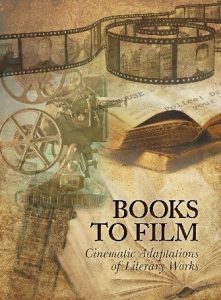| By Elizabeth Ferguson |
In today’s rush to produce more and more content for the silver screen, there is no shortage of cinematic adaptations of literary works. This concept and process is not new, however—directors and screenwriters have long been retelling beloved classics in feature-film format. Take, for example, Francis Ford Coppola’s adaptation of Dracula. Or François Truffaut’s take on Ray Bradbury’s Fahrenheit 451 and James Whale’s version of Frankenstein. Even current works, such as the Harry Potter and Hunger Games series, have found immense success in the film world. Books to Film: Cinematic Adaptations of Literary Works, a new annual series offered on Gale’s GVRL eBook platform, explores the vast world of film adaptation. Entries discuss basic plot summaries of featured books and films; examine critical reaction to each adaptation at the time of their respective releases; provide biographical information on authors, directors, and screenwriters; and explore the process by which the book is transformed into a film. Adaptations covered range “from the silent period (1895–1927) through to contemporary cinema, from studios major and minor as well as independents, from Hollywood and around the globe” as Editor in Chief Barry Keith Grant writes in his introduction to Volume 1. Literary works covered include fiction and nonfiction, canonical works and bestsellers, classic and contemporary works, and long and short writing.




